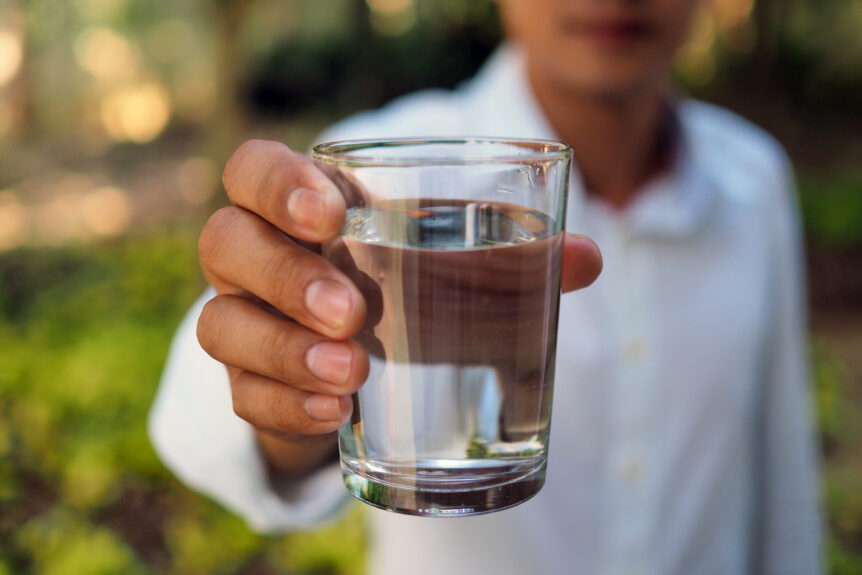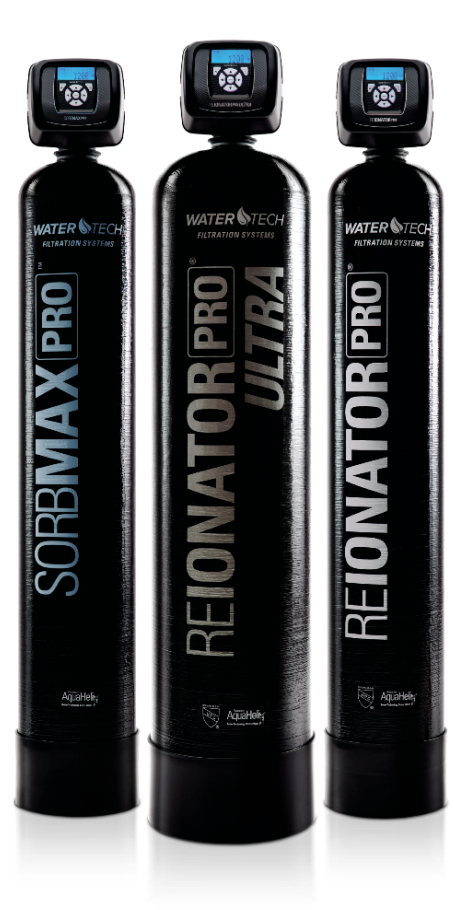| Key Takeaway: If taste or odor is present, pair whole-home carbon filtration with softening for full coverage. Carbon targets disinfectants (chlorine/chloramine) and nuisance flavors, while a softener handles hardness. A brief water test clarifies what you need and the best order to install it. |
Whole-home filtration and softening solve different problems. A softener lowers measured hardness (calcium and magnesium) to limit new scale; a carbon bed adsorbs chemicals that affect taste and smell—most often chlorine or chloramine from municipal treatment. Combine them and everyday water feels better and tastes cleaner, while plumbing and appliances get protection that matches the job.
Carbon filtration 101: what it solves
Carbon is for taste, odor, and certain chemicals—not hardness. City systems typically use chlorine; some use chloramine (chlorine bound with ammonia) for stability in long mains. Both can leave a noticeable flavor and can interact with elastomers over time. A whole-home carbon bed adsorbs these disinfectants and many related byproducts as water passes through.
Two common media families cover most homes. Standard granular or block carbon is effective for chlorine and general taste/odor. Catalytic carbon accelerates reactions with tougher targets like chloramine, and often benefits from more contact time. The right choice depends on disinfectant type and service flow—another reason to confirm with a quick reading.
Softening: what it solves (and what it doesn’t)
A softener uses ion exchange to remove calcium and magnesium, lowering grains per gallon and reducing new scale at its source. That’s why glass rinses clear, soaps behave predictably, and water-using equipment runs closer to spec. Softeners, however, do not address chlorine or chloramine; that’s carbon’s job.
For consistent hardness reduction, match capacity to your tested gpg and daily gallons. Practical options appear across softener configurations sized for typical households and easily paired with whole-home carbon when taste and odor are also priorities.
Order matters: where each stage belongs
On municipal water with chlorine or chloramine: place a sediment screen (if needed) first, then a whole-home carbon unit, then the softener. Putting carbon ahead of the softener improves taste and shields resin from disinfectant exposure, supporting long service life.
On well water without disinfectant: sequence depends on findings. If hardness leads, the softener can follow sediment control; if flavor from natural organics is also on your list, add carbon before or after softening based on contact-time needs and desired flow. Let verified results, peak flow, and service preferences set the order.
Quick reference: whole-home layouts
|
Choosing carbon: standard vs. catalytic
Standard carbon is a strong all-rounder for chlorine and most nuisance tastes/odors at residential flow rates. Catalytic carbon is preferred when chloramine is confirmed or when you want faster kinetics for specific targets. The bigger the bed (and the slower the flow), the more contact time you have—important for chloramine reduction and consistent pressure at multiple taps.
Check your peak household flow (showers + laundry + dishwasher running together) and size accordingly. If you cook and make coffee at home, many households also add under-sink reverse osmosis for a final polish at one tap without changing the whole-home layout.
Why softener + carbon is a smart pair
Dividing the work lets each technology do what it’s best at. Carbon handles taste/odor and reduces disinfectant exposure upstream; the softener tackles hardness downstream so new scale is less likely to form. Together, you get easier cleaning, predictable lather and rinsing, and water that tastes the way you expect—every day.
This division of labor supports longevity, too. Resin that sees less disinfectant tends to last longer, and carbon media that isn’t accumulating hardness scale maintains better flow between service intervals.
Placement, bypass, and simple care
Plan for a full-flow bypass around the treatment train so outdoor spigots or irrigation can remain untreated if you prefer. Keep an eye on three basics: sediment loading, carbon media life, and softener salt/settings. Sediment filters protect everything downstream; carbon beds are re-bedded on schedule; softeners regenerate based on actual use and measured hardness.
DIY-inclined owners can lean on the model references in support resources. If you’d rather hand it off, a local pro can set capacity to your gpg and flow demands, program valves, and outline a simple service rhythm.
Salt-free “conditioners” vs. carbon vs. softeners
It’s easy to mix these up. Conditioners manage how scale sticks; they don’t lower measured hardness. Carbon targets taste/odor (and specific chemicals) but not hardness. Softeners reduce gpg to address the mineral load directly. If the goal is fewer spots and better soap performance, start with softening. If the goal is better flavor and less disinfectant smell, add whole-home carbon. Many homes choose both.
Whole-home filtration FAQs
How do I know if I have chlorine or chloramine?
Will carbon reduce hardness or scale?
Where should carbon go relative to the softener?
What about drinking water at one sink?
Putting it all together
If taste or odor is present, add whole-home carbon; if scale and soap performance are the concern, use a softener; and if you want both outcomes, pair them. A short set of measurements—hardness (gpg), disinfectant type, and household flow—makes the choices straightforward and keeps your system right-sized for daily life.
When you’re ready to check your numbers, a quick water test gets you there. For help translating results into a durable setup, a nearby pro in the dealer network can recommend the order, media, and capacity that fit your home.


